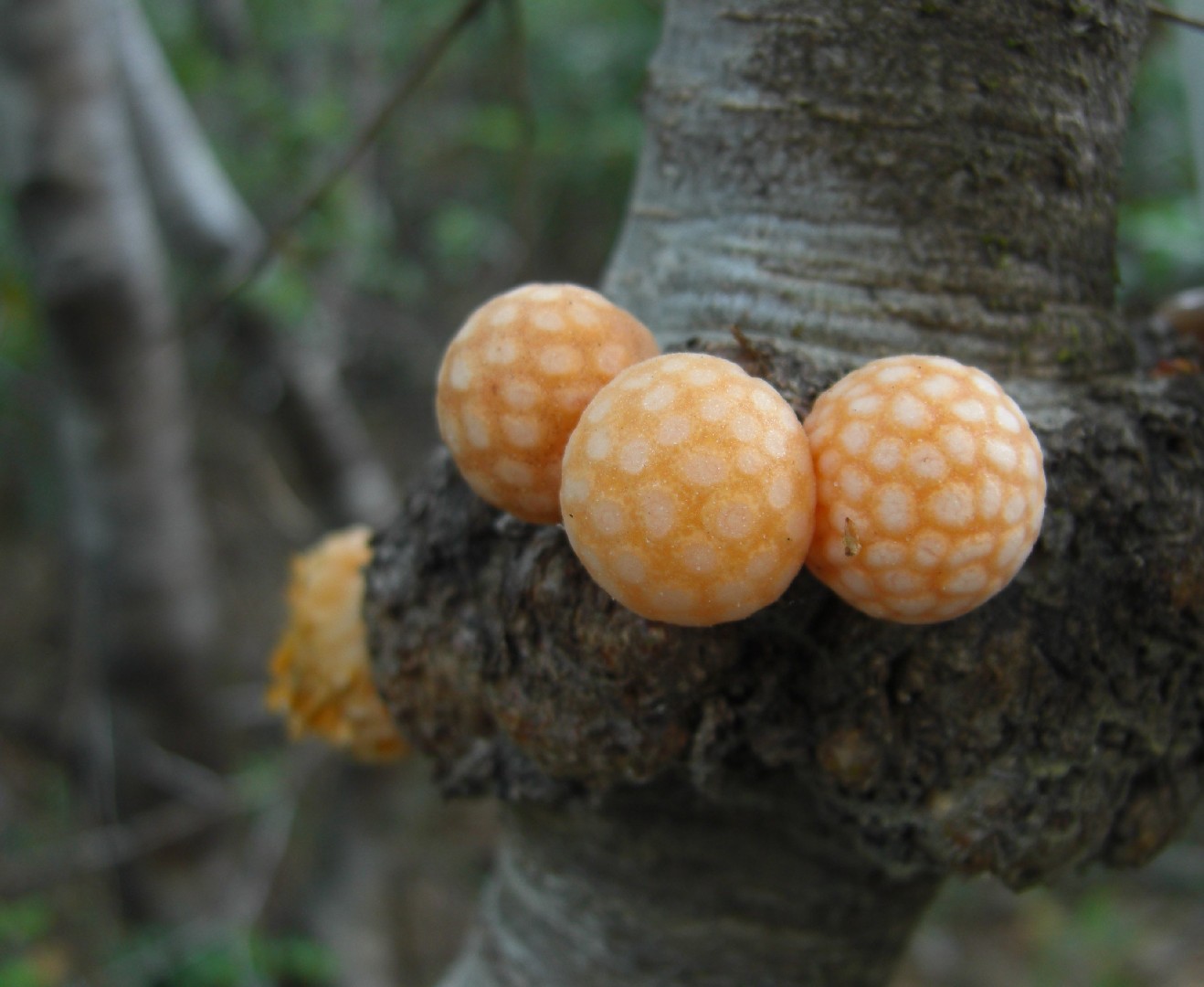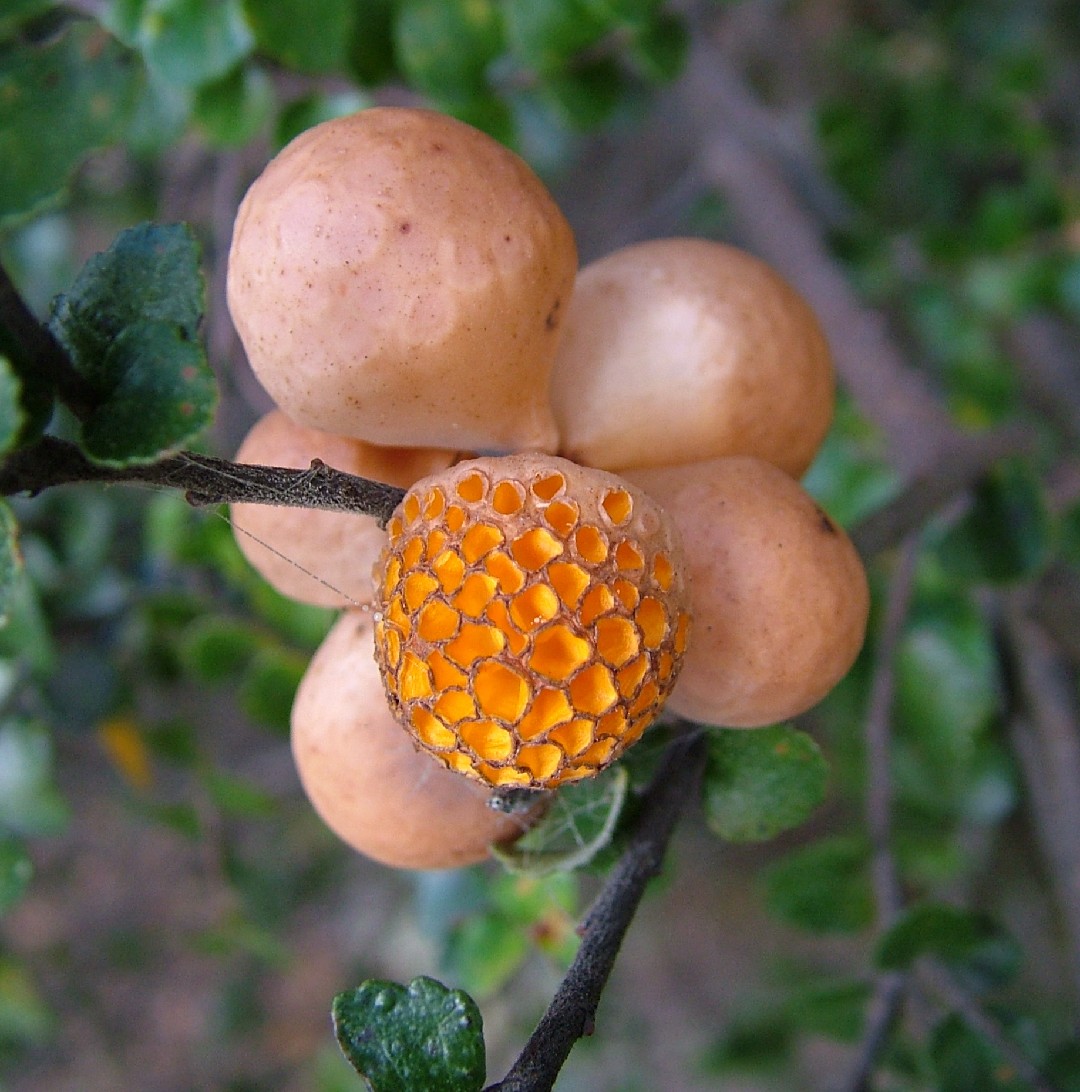Cyttaria
Scientific name: Cyttaria
Cyttaria
Scientific name: Cyttaria
 Photo By Jason Hollinger (jason) , used under CC-BY-SA-3.0 /Cropped and compressed from original
Photo By Jason Hollinger (jason) , used under CC-BY-SA-3.0 /Cropped and compressed from original Description
Cyttaria are unique fungi known for their distinctive golf ball-like appearance and growth on Southern Hemisphere trees, particularly in South America and Australia. One notable species produces orange, gelatinous fruiting bodies that dangle from the host tree, creating an almost surreal sight. These fungi are often integral to local ecosystems, establishing a symbiotic relationship with their tree hosts. They historically fascinated indigenous peoples and continue to intrigue mycologists worldwide.
